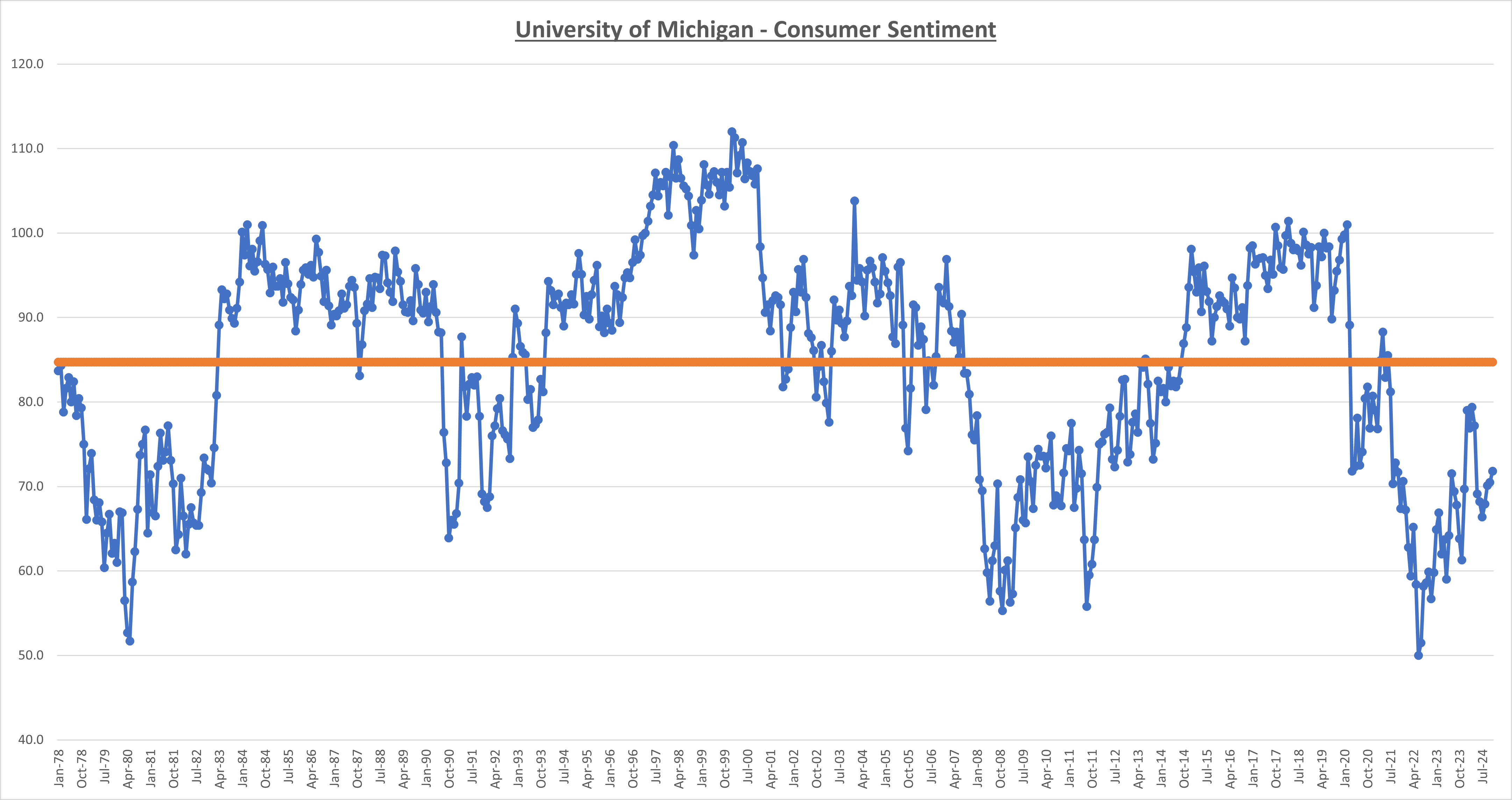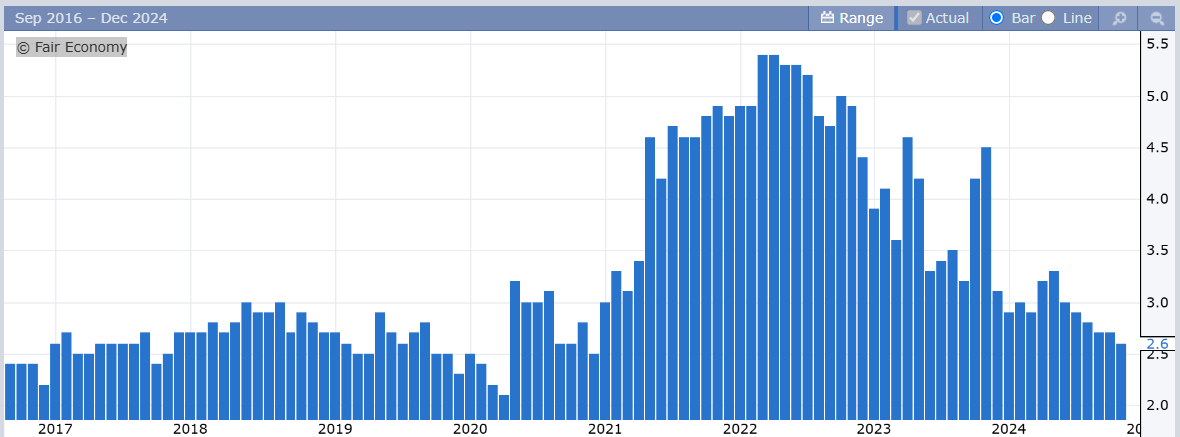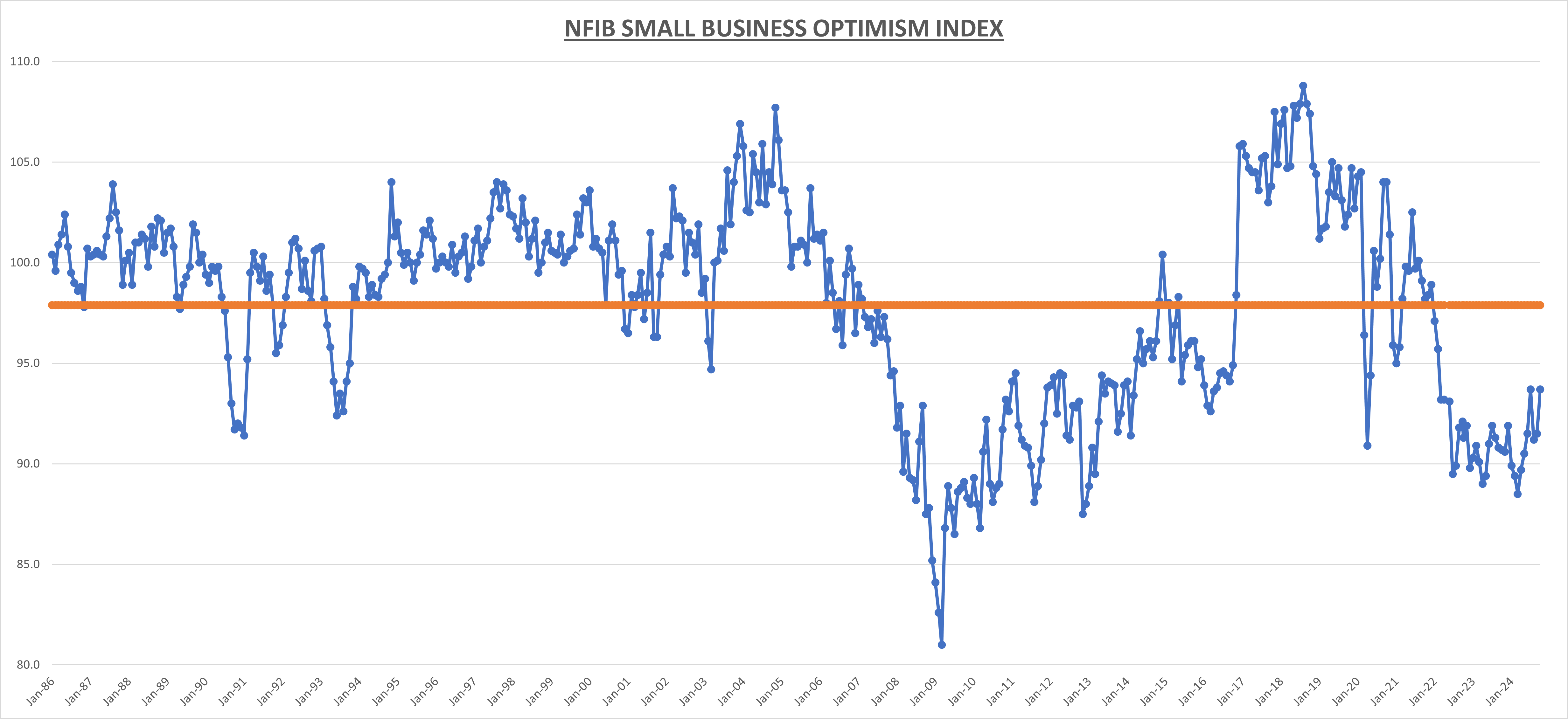The University of Michigan just released its revised Consumer sentiment data for the month of November, which came in below expectations at 71.8 (street expecting 74.0). This however was a modest 1.3 points higher than last month (+1.8%) and 17.1% higher than last year.
The consumer sentiment index has been below its historical average (orange line: 84.7) for over 3 years now, as cost of living increases continue to negatively impact consumers.
Year ahead inflation expectations fell to 2.6%, which is back inside the normal range. This is positive, as when consumers expect higher prices in the near future, it tends to become a self-fulfilling prophecy. As we saw in 2021, when inflation expectations began spiking before it began showing up in the CPI or PCE.
The NFIB released its small business optimism index data last week. That number came in above expectations at 93.7 (street was expecting 91.9). But as you can see in the chart above, this index has also spent most of the last 4 years below its historical average, as small business owners also deal with a variety of problems, such as inflation, regulations, employment, etc.
Small businesses employ roughly 2/3rd’s of the countries workforce. I would expect this index to get back above its historical average, now that it appears the new administration will have a clear path to implement its pro-growth policies. We can debate the “trickle-down” effects, but its pretty clear these policies have a positive impact on business. As the index spiked in late 2016, and soared to all time highs by 2018.
These indicators don’t always determine the path of the economy and markets, as both have done quite well over the last few years even though the sentiment indicators have remained below average. Still, consumer and business sentiment are powerful forces. I tend to look for extremes in sentiment as potential turning points for the economy & markets. So for example, times of extreme pessimism may be a signal that the downward trend is getting exhausted, and a new uptrend could be on the horizon. Such as we saw in late 2008, and mid 2022. And vice versa.
